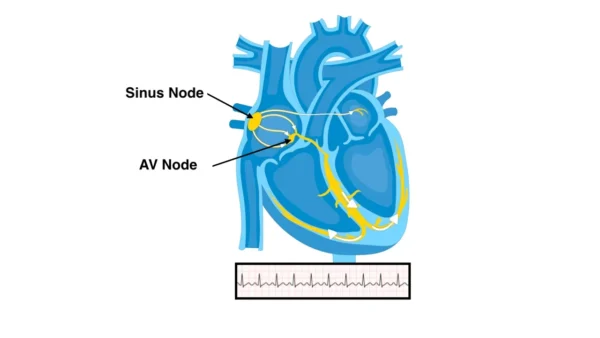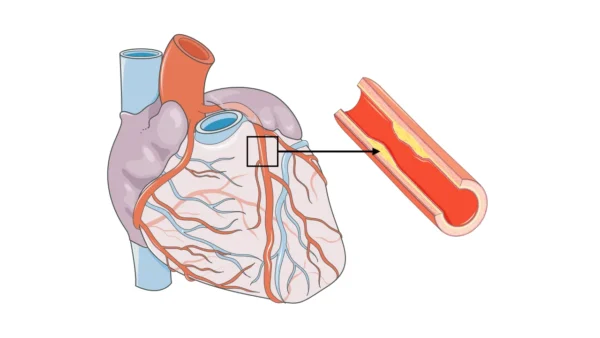Pericardial effusion occurs when extra fluid collects in the pericardial sac—the thin, double-layered membrane that surrounds your heart. A small amount of fluid normally cushions the heart, but when this fluid increases beyond normal levels, it can place pressure on the heart and interfere with its ability to pump effectively. Pericardial effusion can develop slowly and cause mild symptoms, or it can appear suddenly and become life-threatening if the pressure rises quickly. Early recognition and treatment are essential to prevent serious complications such as cardiac tamponade, where the heart becomes compressed and unable to fill properly.
Overview
Pericardial effusion means an abnormal accumulation of fluid in the pericardium. This fluid can be thin and watery, thick and inflammatory, or even bloody depending on the underlying cause. The significance of the effusion depends not only on the amount of fluid but also on how quickly it collects. A slow-growing effusion may reach large volumes before causing symptoms, while a rapid buildup of even a small amount can severely impair the heart’s function.
The pericardium normally helps protect and lubricate the heart. When too much fluid accumulates, it stretches the sac and increases pressure on the heart chambers, especially the right side. If this pressure becomes high enough, the heart cannot fill with blood properly, leading to low blood pressure, shock, or even death without urgent treatment.
Causes
Pericardial effusion can result from a wide range of medical conditions affecting the heart or surrounding structures.
- The most common cause is inflammation of the pericardium, known as pericarditis. This inflammation may stem from viral infections, autoimmune diseases, or unknown reasons.
- Infections—viral, bacterial, fungal, or tuberculosis-related—can cause effusion.
- Cancer involving the pericardium, such as lung, breast, lymphoma, or metastatic tumors, can lead to fluid buildup.
- Heart surgery or injury to the chest can trigger inflammation that produces excess fluid.
- Kidney failure can cause uremic pericarditis with associated effusion.
- Hypothyroidism may cause slow, progressive fluid accumulation.
- Radiation therapy to the chest for cancer treatment can damage the pericardium and cause effusion, sometimes years later.
- Autoimmune diseases like lupus or rheumatoid arthritis often involve the pericardium.
- Trauma, including blunt or penetrating injuries, can lead to bloody pericardial effusion.
- Some medications and certain rare disorders also contribute.
- In many cases, especially mild ones, the exact cause may not be identified.
Symptoms
Symptoms depend on how much fluid is present and how quickly it accumulates.
The most common early symptom is shortness of breath, especially when lying flat. Some people feel chest pressure or discomfort rather than sharp pain.
Other symptoms include:
- Fatigue or reduced exercise capacity
- A sense of fullness in the chest
- Rapid heartbeat or palpitations
- Lightheadedness or dizziness
When fluid accumulates rapidly or in large amounts, symptoms become more severe:
- Marked shortness of breath
- Low blood pressure
- Fainting or near-fainting
- Cold, clammy skin
- Severe chest pressure
These may indicate cardiac tamponade, a life-threatening emergency where the heart is compressed and cannot pump effectively.
Diagnosis
Diagnosing pericardial effusion requires both clinical evaluation and imaging.
A doctor may detect muffled heart sounds or elevated neck veins on examination, which suggest fluid around the heart.
The primary diagnostic tool is echocardiography, which clearly shows fluid in the pericardial sac and evaluates whether the heart chambers are being compressed. It is the most important test for both diagnosis and monitoring.
Additional tests may include:
- Electrocardiogram (ECG) to assess electrical changes caused by fluid
- Chest X-ray to detect an enlarged heart silhouette
- CT or MRI to provide detailed imaging when needed
- Blood tests to look for infection, inflammation, kidney dysfunction, thyroid abnormalities, or autoimmune causes
If the cause remains unclear, fluid may be removed for analysis.
Treatment
Treatment depends on the size of the effusion, its cause, and whether it affects heart function.
For mild effusions without signs of tamponade, treatment may focus on managing the underlying cause:
- Anti-inflammatory medications
- Treatment of infections with antibiotics or antivirals
- Adjusting medications causing fluid buildup
- Managing thyroid or kidney disease
- Treating cancer-related causes
Moderate to large effusions, especially those causing symptoms, may require pericardiocentesis, a procedure where a needle and catheter are used to drain fluid from the pericardial space. This can relieve pressure immediately and provide samples for analysis.
In recurrent or chronic cases, surgical procedures such as creating a pericardial window or removing part of the pericardium may be necessary to prevent fluid from re-accumulating.
If the effusion leads to cardiac tamponade, urgent drainage is lifesaving.
What Happens If Left Untreated
Untreated pericardial effusion, especially when large or rapidly accumulating, can progress to cardiac tamponade. This condition prevents the heart from filling with blood, causing a sudden drop in blood pressure, shock, and potentially death.
Even slow-growing effusions eventually strain the heart and cause worsening shortness of breath, exercise intolerance, and symptoms of heart failure. Underlying diseases such as cancer, autoimmune disorders, or infections may also worsen if not addressed.
What to Watch For
Be alert for:
- Increasing shortness of breath, especially when lying down
- Chest pressure or a sense of fullness
- Unexplained fatigue
- Rapid heartbeat
- Swelling of the legs or belly
- Feeling faint or lightheaded
If you experience sudden or severe breathing difficulty, dizziness, or a rapid drop in blood pressure, seek emergency care immediately—these may indicate cardiac tamponade.
Regular follow-up is important to monitor effusion size and heart function, especially after an episode of pericarditis or in people with chronic medical conditions.
Living with Pericardial Effusion
Living with this condition requires close monitoring and careful attention to symptoms. Most people recover fully when the underlying cause is treated.
Regular echocardiograms help track fluid levels. Following your treatment plan—whether medications, fluid drainage, or treatment of the underlying illness—is key.
Lifestyle measures include:
- Avoiding strenuous activity during active inflammation
- Managing autoimmune or chronic conditions that contribute
- Maintaining heart-healthy habits such as not smoking, eating a balanced diet, and staying active within your limits
Emotional support and follow-up with a cardiologist are important, especially if the effusion is caused by chronic disease.
Key Points
- Pericardial effusion is a buildup of fluid around the heart that can range from mild to life-threatening.
- Symptoms include shortness of breath, chest pressure, fatigue, and rapid heartbeat.
- Echocardiography is the primary diagnostic tool.
- Treatment includes managing the underlying cause, draining the fluid when necessary, and monitoring for recurrence.
- Untreated effusion can progress to cardiac tamponade, a medical emergency.
- With timely treatment and monitoring, most people recover well.






